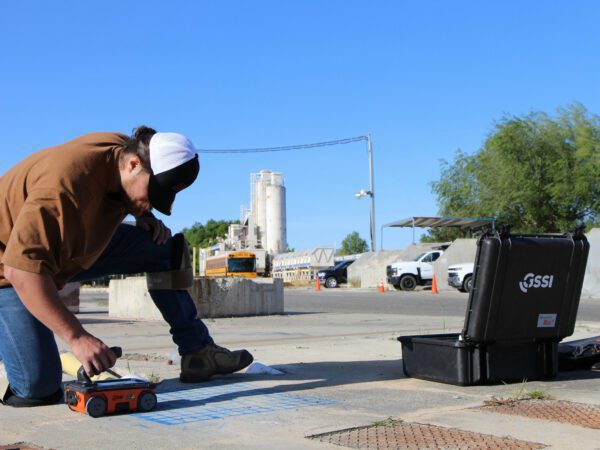RainierGPR Service Areas: Top Concrete Scanning Solutions Across Regions
RainierGPR Service Areas: Top Concrete Scanning Solutions Across Regions
Blog Article
Concrete Scanning: A Critical Action In The Direction Of Making Certain Architectural Honesty and Safety And Security
In the realm of building and construction and framework maintenance, the significance of concrete scanning can not be overemphasized. By utilizing advanced technology and techniques, concrete scanning offers as a crucial device in ensuring that the honesty and security of bridges and structures are upheld to the highest possible standards.
Relevance of Concrete Scanning
Concrete scanning plays a crucial function in ensuring the architectural integrity and safety and security of buildings and framework projects. By making use of advanced innovations such as ground-penetrating radar (GPR) and electro-magnetic induction, professionals can non-destructively inspect concrete frameworks to detect prospective defects, spaces, ingrained objects, and reinforcement format. This process allows very early detection of anomalies that can compromise the stability of a framework, avoiding costly problems and making certain the security of passengers.
Prior to exploration, cutting, or coring right into concrete, scanning helps identify the precise locations of rebar, post-tension wires, and various other embedded elements, reducing the threat of unexpected hits that might lead to structural weak points. Furthermore, concrete scanning aids in top quality control by validating the thickness of concrete covers and finding any kind of disparities that might impact the total durability of the framework.
Innovation for Concrete Assessment

Advantages of Very Early Detection
Timely detection of architectural concerns can considerably alleviate threats and ensure the durability of construction jobs. By recognizing possible troubles early on in the building procedure, stakeholders can take positive actions to resolve issues before they escalate into larger and more costly problems. One of the key benefits of early detection is the avoidance of architectural failings, which can posture serious safety hazards and result in project delays and financial losses.
Moreover, very early discovery enables prompt repair services and upkeep, which can assist extend the lifespan of the structure. By addressing issues without delay, building and construction groups can prevent expensive repair services or perhaps the requirement for premature substitute of architectural elements. This positive method not only saves money and time but additionally boosts the general safety and toughness of the building and construction job.
Furthermore, early discovery can enhance project planning and decision-making by providing stakeholders with beneficial understandings right into the condition of the structure. Armed with this details, task supervisors can make educated choices regarding construction timelines, methods, and materials, bring about a lot more efficient and effective project end results.
Guaranteeing Architectural Stability
Making sure the structural stability of a construction job is paramount to its safety and security and longevity. Architectural stability refers to the capacity of a structure or framework to preserve its type and feature under ecological conditions and various loads. To achieve this, thorough assessment and tracking of the structure are important. Concrete scanning plays a critical check my source function in making certain architectural stability by spotting possible problems such as gaps, delamination, or reinforcement rust that might endanger the integrity of the structure in time.
By utilizing advanced scanning innovations like ground-penetrating radar (GPR) and electromagnetic induction, building experts can non-invasively inspect concrete frameworks to recognize locations of problem under the surface area. This positive technique enables for the early detection of weak points or flaws, making it possible for punctual repair services or reinforcement to stop structural failings.
Normal concrete scanning throughout different construction stages and throughout the life process of a structure can help keep its security, reduce risks, and ensure the safety and security of passengers. By prioritizing structural security with concrete scanning, construction projects can boost their strength and durability, inevitably contributing to greater safety and security and long life.

Protecting Against Important Failures
To safeguard versus devastating occasions, precise monitoring and positive maintenance are imperative in avoiding crucial failings within structural structures. Discovering possible problems prior to they intensify is key to stop structural failings. Executing regular inspections, such as concrete scanning, can expose hidden flaws like gaps, fractures, or deterioration that could jeopardize the honesty of a structure. By making use of sophisticated scanning modern technologies like Ground Permeating Radar (GPR) or Concrete X-ray, engineers can non-destructively assess the problem click over here of concrete and identify powerlessness that call for reinforcement or repair service - RainierGPR Service Areas.

Final Thought
In verdict, concrete scanning plays an important duty in ensuring structural integrity and security by using sophisticated modern technology for very early discovery of possible concerns. This aggressive strategy aids protect against crucial failures and guarantees the stability of structures. It is important to prioritize concrete evaluation as a common method to secure the durability and security of buildings and infrastructure.
Concrete scanning plays an essential role in ensuring the architectural honesty and security of buildings and infrastructure projects. In addition, concrete scanning help in high quality read the full info here control by verifying the density of concrete covers and identifying any kind of inconsistencies that may influence the total toughness of the structure. Concrete scanning plays an important role in making certain architectural stability by detecting possible problems such as voids, delamination, or support corrosion that could endanger the stability of the framework over time.

In conclusion, concrete scanning plays a crucial role in making sure architectural stability and safety and security by making use of innovative modern technology for very early discovery of possible concerns.
Report this page